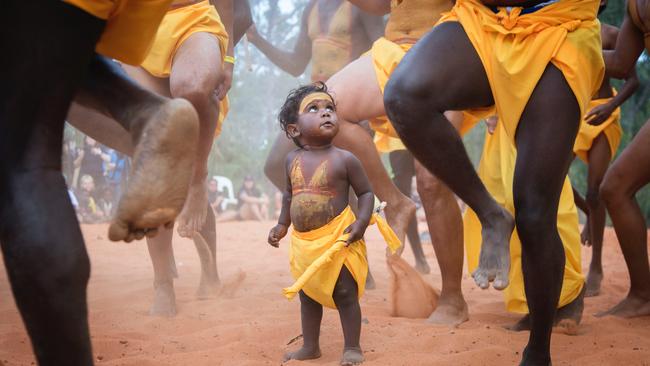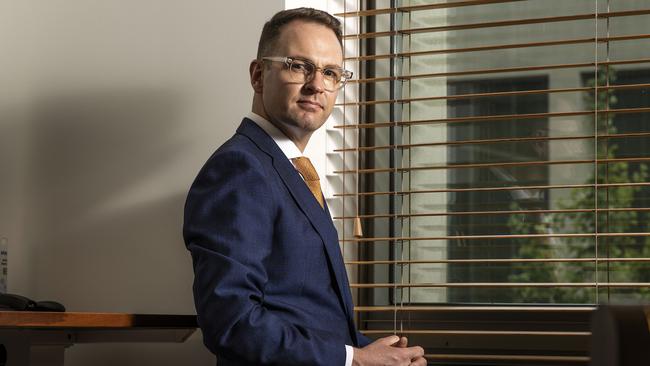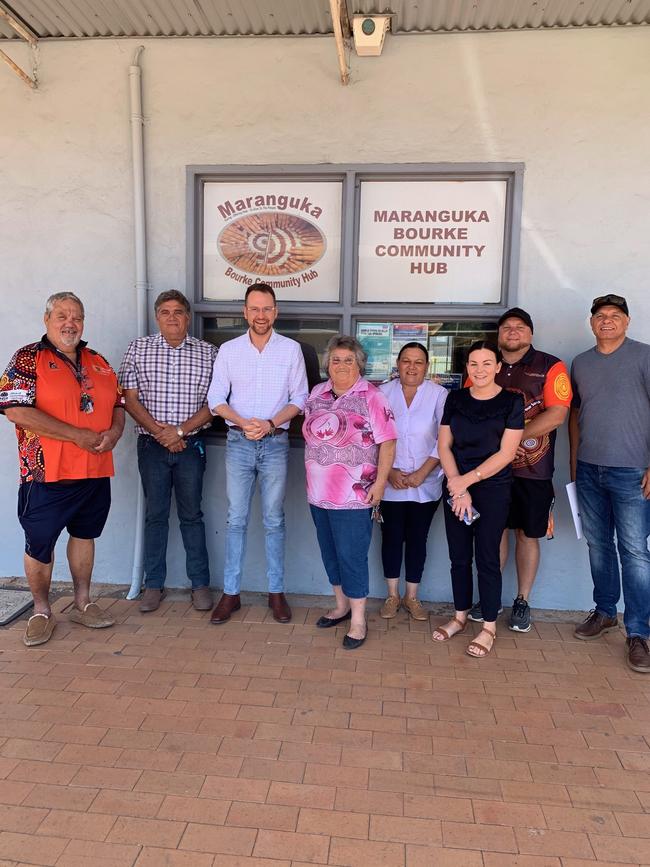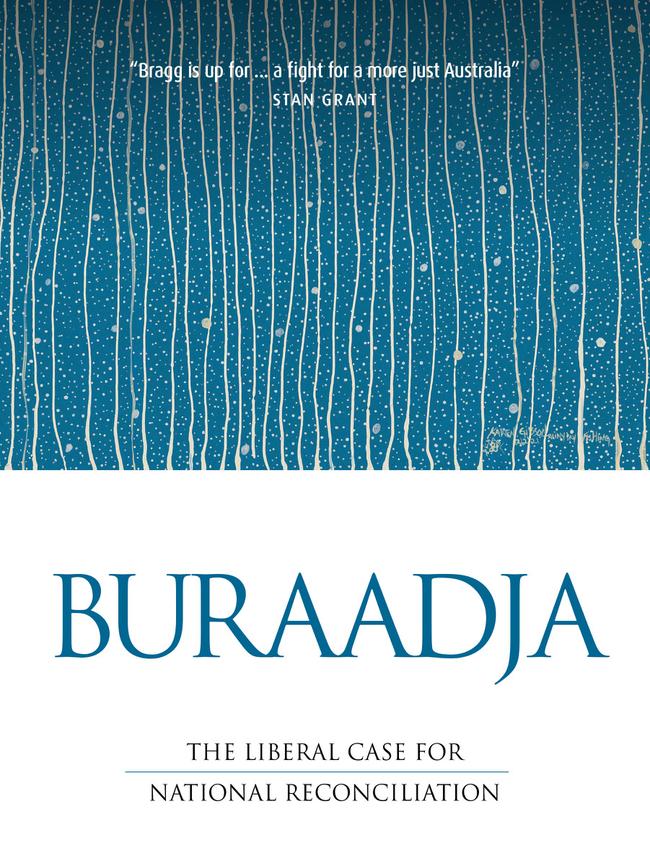Indigenous reforms today make us better tomorrow
Indigenous Australians have shown the greatest demonstration of resilience for a people cruelly expected to die out.

How do I, as a liberal, justify the proposition that Indigenous people should garner special attention?
Some liberals think liberalism and Indigenous affairs are in permanent conflict. This juxtaposition has been disingenuously amplified by the opponents of the 2017 Uluru Statement from the Heart who argue an Indigenous Voice to Parliament would be fundamentally illiberal.
The Uluru Statement has a Voice to Parliament as its centrepiece — the Indigenous people say this will provide more control and agency and therefore better lives.
The request is similar to those made in the 1963 Yirrakala Bark Petitions and 1988 Barunga Statement. Both were largely ignored. This time, we cannot miss the opportunity. The Uluru Statement must not be allowed to sink into the sand.
On face value, an institution like a Voice which is closed to 97 per cent of Australians sounds illiberal. But this ignores the history of Australia and the present where the only broadscale race-based laws exist for Indigenous Australians. Liberalism only works if everyone is given an equal chance, and for 250 years, we have not worked hard enough to guarantee the liberal deal for all Australians.

Australian liberalism should work for all Australians, yet it was not designed for Indigenous people. The problem for the Indigenous people was partly that they were, at best, on the fringes of society, and, moreover, that they were the target of racism. Liberalism and racism coexisted.
The foundational offence of liberal Australia was to pursue the development of modern Australia on the back of the displacement of Indigenous people. The history of the nation was cast without Indigenous people. They were regarded as a “dying race” expected to expire in time.
The national blindness gave rise to the Great Australian Silence that the anthropologist and historian, Bill Stanner, spoke of in his 1968 Boyer lectures, After the Dreaming. Stanner’s critique of Australian history was that it had pretended that Indigenous people did not exist. Stanner’s formulation was that it was easier to be silent about this great national shame and quiet about the stain on the nation’s canvas which was otherwise very successful.
In the decades following Stanner’s lectures, the history of Australia has been rebalanced but, as a liberal Enlightenment, Australia is yet to deliver for Indigenous people. The truth is liberalism can work for Indigenous people.
Today’s statistics on Indigenous life expectancy, education levels, incarceration, and health outcomes speak to the challenge. I think we should advance structural reforms which the Indigenous community has sought — because it will help address Indigenous disadvantage but it will also make Australia better. It would make Australia better on the inside and out. As Stan Grant told me: “There’ll be a lack of national legitimacy until we fix it.”
We all know it to be true. It must be why John Howard said in 2007, when he was prime minister: “I believe we must find room in our national life to formally recognise the special status of Aboriginal (peoples) and Torres Strait Islanders as the first peoples of our nation.”
My sense is that this is such a troubled debate because most Australians have a limited understanding of the issues facing Indigenous people, along with limited engagement, or none at all. Indigenous people and “their issues” do not feature in the lives of most Australians.
This is the wicked problem of proximity. As Stan Grant says: “People don’t know us.” This is a product of scale and dispersion. It is a small group in a big country. Of the 25 million Australians, fewer than three per cent are Indigenous. Almost one quarter live in very remote areas and the majority live in suburbs, towns, and cities. In a Commonwealth like ours, their issues are our issues.
The failure to make good is the biggest drag on our nation’s identity. I reflected on Noel Pearson’s counsel to me before my first speech to the Senate in 2019, when he said “Andrew, this is my country too”.
Pearson’s 2014 essay, A Rightful Place, has influenced me more than any other text on the issue. In it, he says that “you cannot have a unified nation, this cannot be a fair nation, without the proper inclusion of three per cent of the nation who were originally excluded from the Constitution”.
Pearson’s pitch is underpinned by a desire to complete Australia — which remains the most potent pitch to all Australians — especially to liberals and conservatives. The unifying approach which Pearson sets out is the only credible pathway. Although to some extent this agenda is about correcting past misdeeds, it is also about the future and our national unity. Tearing down modern Australia will not work.
It won’t deliver votes at a referendum. A significant component of the reforms sought by Indigenous Australians and by me would require constitutional amendments. This means asking a majority of the nation to vote in favour of changes for a group of Australians not personally known to them. It asks the majority to give something to the Indigenous minority without taking anything away from anyone.
A liberal approach to national reconciliation is to maintain fidelity to the key tenets of Australian liberalism — rule of law, freedom and individual dynamism while recognising that the need for special laws demands special systems.

At the moment, we have special laws for Indigenous people but no system to reflect this reality. The flexible beauty of liberalism is that it can adapt, even if it is tardy. How could you have special laws drawn up without some special capacity to engage the affected people? That’s the system we have today in Australia.
Policies like land rights have become part of the Australian project and have been further embedded into the common law and statute books.
The question is whether these policies are promoting the economic development and individual agency that we hold dear under the liberal formula.
The point about land rights and native title, the former having been legislated by a Liberal government, is crucial to any discussion about Indigenous affairs and liberalism. On face value, the basic philosophy of liberalism to drive individualism is inconsistent with Indigenous collectivism.
Our system of government has already proven to be flexible enough to accommodate collectivism and we have established institutions in our liberal democracy to manage this inconsistency.
Indigenous groups have had legal status at Commonwealth law from the 1976 passage of the Land Rights Act by the Fraser government. The Uluru Statement from the Heart calls for constitutional reform. The Voice emerged from a discussion kicked off by Howard on constitutional recognition. It should therefore end with a constitutional amendment. Ideally, a constitutional amendment and accompanying legislation to enact the Voice would be announced and delivered simultaneously. A Voice would deliver for Indigenous people and Australia both practically and symbolically.
A National Voice could do four things tomorrow.
First, it could advise on legislation which is made specifically for Indigenous Australians — such as the Native Title Act. For example, in December 2020, the parliament considered an amendment to this act. As part of the briefing materials provided to parliamentarians or as part of the senate committee process, there could have been a summary of Indigenous advice on the bill from the Voice.
This is a gap in our process which I see as a legislator. I can also understand the perspective of the communities who want to have a say on laws that affect them and only them.
Secondly, it could take custody of the Aboriginal flag, assuming at some stage the Commonwealth is able to agree with Harold Thomas to acquire the rights to the flag, it will need an appropriate home. The flag’s usage and protocols will need to be maintained properly. Given its historical usage as a flag of protest, it will surely fit into a structure like a representative Indigenous body rather than being buried in a department.
Thirdly, it could fulfil the role of cultural adviser. As the Australia Council for the Arts has explained: “For decades, numerous reports, inquiries and campaigns have highlighted issues of misuse and misappropriation of First Nations arts and culture.” A cultural adviser could be drawn upon for events including the opening of Parliament each year. I propose changes to the Opening of Parliament to ensure there is a stronger link to Indigenous culture.
Fourthly, it would be a collector, aggregator, and analyst of data in conjunction with the Productivity Commission. It could offer a view on the successes and failures of programs. This is a large industry which has not performed well. More than $33bn was spent on Indigenous programs in 2015-16, according to the Productivity Commission.
There are also endless tasks for local and regional voice bodies to undertake, putting Indigenous people at the centre of local decision making.

For me, just two words summarise the Indigenous people of Australia: resilience and generosity. There are almost one million Indigenous people in Australia, which is the greatest demonstration of resilience for a people who were cruelly expected to die out.
The generosity of Indigenous people knows no bounds. After nearly 250 years of challenging times, the Indigenous advocates put forward the Uluru Statement from the Heart, which is a generous contribution to Australia; an opportunity to consolidate.
Uluru is a far cry from the extremes of Black Lives Matter. It speaks to unity, not division. Accordingly, this generation must not let the Uluru Statement go the way of the Barunga Statement.
Australian liberalism is big enough and flexible enough to drive this change. And it must. For however long the political class and Indigenous community accept the need for a slew of special laws for Indigenous people, there must be a special system — such as a Voice.
To maintain the void is illiberal, which is why the Liberal Party must lead this reform.
Increasingly, Indigenous culture and language is part of our national identity and life. The blooming Indigenous visibility shows we are already living Pearson’s tripartite formulation of Australia of Indigenous heritage, British institutions, and a multicultural gift.
Partly, we have Bill Wentworth and the Menzies government to thank. The Australian Institute of Aboriginal and Torres Strait Islander Studies, which they established, has preserved our unique Indigenous history. It has brought to life languages in decline or lost — like the Dhurga language which provided the name for this book Buraadja.
As my inspirational friend, Ken Wyatt, counselled me: “Patience is a virtue in Aboriginal affairs.” He is right — but we have been canvassing meaningful and permanent reconciliation and recognition since Howard put it on the agenda in 2007. It is long enough. We must now deliver on the Uluru Statement From the Heart which contains deeply liberal ideals.
I closed my First Speech to the Senate with these words: “I look forward to writing the next chapter in the rich history of Australian liberalism.” This is the chapter I hope we can write together buraadja.
This is an edited extract from Buraadja: the Liberal Case for National Reconciliation by Senator Andrew Bragg. Buraadja means ‘tomorrow’ in the Dhurga language of the Yuin People of the NSW South Coast.

To join the conversation, please log in. Don't have an account? Register
Join the conversation, you are commenting as Logout